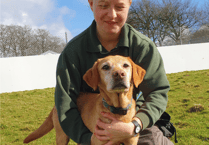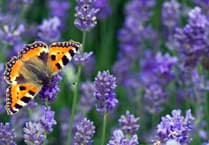A LEADING Dartmoor ranger has confirmed that two of the three fires which blazed across Dartmoor last Tuesday (March 22) were approved swaling fires.
Robert Steemson, community and land management ranger at Dartmoor National Park, said that the park had approved two of the blazes for swaling purposes, which sees the controlled burning of ground in order to rejuvenate it for the next season.
He said: ‘From what we understand they were swaling legally. The commoners [farmers on the common moorland] have a right to burn the moor between November and the end of March.’
However, firefighters were called to a third moorland fire on the same day which Mr Steemson said had not been authorised by the national park. Thirteen stations attended the fire, which broke out near the Clearbrook area of Dartmoor, with the crews using eleven pumping appliances and three all-terrain vehicles at the height of the incident.
The police were also called to attend and helped fire crews using a police helicopter and drone.
Firefighters spent five hours tackling the blaze.
It is estimated that the fire damaged approximately 950 acres (1.5 square miles) of moorland.
‘The positive is that the Commoners went to [Dartmoor National Park] as soon as the incident got out of control and called the fire service,’ said Mr Steemson
‘Thanks go to the fire service for sorting it out so quickly.’
The fire service has since labelled the fire as accidental and there will be no further investigation by the fire service or police.
Fire crews have been tackling further incidents on the moor in the last few days with gorse fires at Widecombe in the Moor (Friday) and Mary Tavy (Monday).
Members of the public have raised concerns over the safety and the environment impact of swaling on social media.
Layland Branfield, vice-chairman of the east quarter of the Dartmoor Commoners’ Council and farmer near Two Bridges, explained that the practice was heavily regulated and farmers took all precautions to ensure the safety of animals and people alike.
He said: ‘We do need to swale but there’s a difference between swaling and a wildfire.
Anything we do is bound by the Heather and Grass Burning Code which sets the dates by which we have to get the burning done by and inform people when we are doing it. It’s actually very small parts that we burn.
‘You need a lot of manpower, water to control the fire and you have to keep it under control. We try to do it on days with little wind and the birds stay out of the way.’
Swaling is an ancient form of land management which is still practised by Dartmoor’s farmers. It involves the controlled burning of small areas of overgrown heather, gorse and grass in order to improve grazing for animals in the new season.
On the other hand, wildfires are uncontrolled fires across large areas of countryside, usually heathland or moorland, railway embankments, fields and woodlands.
They are often caused by human actions such as barbecues or discarded cigarettes, though natural causes such as a lightning strike can also ignite such a fire.
Legally burning can only take place between November 1 and April 15, but there is a voluntary agreement across Dartmoor to stop swaling by March 31 since ground-nesting birds are beginning to nest.
Though the swaling season is now coming to an end, Devon and Somerset Fire and Rescue Service are still advising people to be cautious.
It said: ‘The safety message is just to be really cautious. Don’t have a barbecue or cigarette but if you have to be really careful.’
For more information about swaling visit the Commoners’ website at www.dartmoorcommonerscouncil.org.uk.





Comments
This article has no comments yet. Be the first to leave a comment.